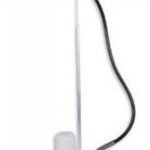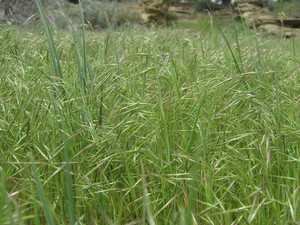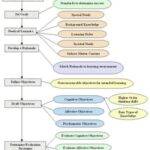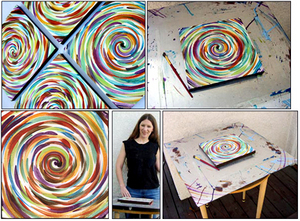For a beginning sewer, learning how to read a sewing pattern can be the most difficult thing to master. You have to learn how to read a pattern instruction sheet as well as master the sewing language on the pattern tissue. After you have finished reading this article, hopefully you will be able to read a sewing pattern with a little more ease and confidence.
The first thing you should know about reading a sewing pattern is the pattern envelope is just as important as its contents. On the front of the pattern envelope are views of the garment you will be sewing, and the price and name of the sewing pattern-McCalls, Vogue or Butterick. The top right corner of the envelope will have a letter followed by four numbers which is the style number of the garment. For example, M6173 is read as “M” for McCalls and the 6173 is the style number for misses/miss petite pants and leggings. Always keep the style number stored away or the envelope itself because you can use it on the dealer’s website to search for that exact sewing pattern.
The back of the envelope will serve as your buying guide for your notions and fabrics because it will tell you exactly how much you need to purchase and what kind. The lip of the envelope will show the sewing pattern’s price as well as a quick glimpse of the measurements for the pattern depending on the pattern company. You will read over the measurements to see where you fall in and to see how much you will need to alter the pattern (if at all). The entire back of the envelope will be more detailed such as the front and back view of the garment, suggested fabrics, body measurements along with fabric yards and possible interfacings and linings. Notions will be included as well as finished garment measurements, and remember that design ease will be included in the final measurements. You should really read over the back carefully to make sure you have everything needed to sew your pattern.
Once you have become familiar with the outside of your envelope, you can proceed to taking out the pattern sheet instructions and the pattern tissue. The pattern sheet instructions are significant to the pattern tissue because it tells you how to lay your pattern pieces on the fabric, and how to construct your pattern. On the pattern sheet instructions you will see the front and back view of the garment, some of the pattern tissue language, pattern pieces, and the cutting layout. The pattern language or pattern markings will be of significance to you because it will tell you how to read all the symbols on the pattern tissue. The pattern pieces illustrate what cutouts you will need for the view you are sewing. For example, if you are sewing view A, you may need to cut out and sew pieces 1, 2, 5, and 7. The cutting layout is key to your overall sewing because it will show you how to line up your pieces on your fabric so that you get the most out of your fabric especially if a piece is required to be placed on the fold.
After you have studied your pattern sheet instructions to familiarize yourself with how to read the pattern tissue and how to lay your pattern pieces on the fabric, you will then turn your pattern sheet instructions over which will show you how to construct the pattern pieces. Most pattern companies are good about including what type of sewing techniques to use for construction, so make sure you are familiar will all sewing techniques both on machine and by hand. There will be a lot of construction information; therefore, you need to make sure you find the view you are sewing and follow those set instructions given. For example, if you are sewing view A, look over the sewing instructions to find view A and follow those instructions only.
When you are done reading the pattern sheet instructions and feel confident in what you have read, then you should move on to your pattern tissue which is what you will be cutting. Before you begin cutting your pattern tissue you need to iron it to remove all the folds. Iron on low because you don’t want to burn your tissue paper by ironing it on high temperatures. When you start to read your pattern tissue you will see a lot of information which is where I’m going to breakdown their meaning. Usually at the center of the pattern tissue is a large, bold number which is a piece number needed for a particular view. Underneath the piece number will be the name of the piece. For example, your pattern piece number will be 4 and the name of the piece will be front bodice or back bodice, front skirt or back skirt, sleeve, etc. Before cutting make sure you read the piece number and name to make sure you are working with the correct pattern pieces.
Thanks to pattern companies realizing women’s bodies comes in all shapes and sizes, they have created multiple sizes on their patterns. The cutting line on a pattern is indicated by a bold line-sometimes with scissors-and there will be two or three other lines which are indicated by different sizes. For example, the bold line will either have 6, 7, 8, or 9, and you will have to determine your size and cut that line that has your size. Pattern sizes can also be measured in small, medium, or large so keep a lookout for that especially when working with pants and jackets. It can be quite confusing in the beginning which is why you need to follow your size with your finger and then cut out. Cutting out the wrong size is not fun if you don’t know how to make alterations to your pattern pieces so choose correctly. On the bold line will be notches or triangles and you will cut around the triangle because they help match up your pattern pieces. There is other pattern tissue language which can be found on the pattern sheet instructions if you get lost.
Learning how to read a sewing pattern will require a lot of patience and time especially if you are new to sewing. You have to learn the basics of pattern sheet instructions, and the pattern tissue itself. I messed up three sewing patterns before learning how to accurately read a sewing pattern, so just take your time and enjoy learning how to construct garments.





